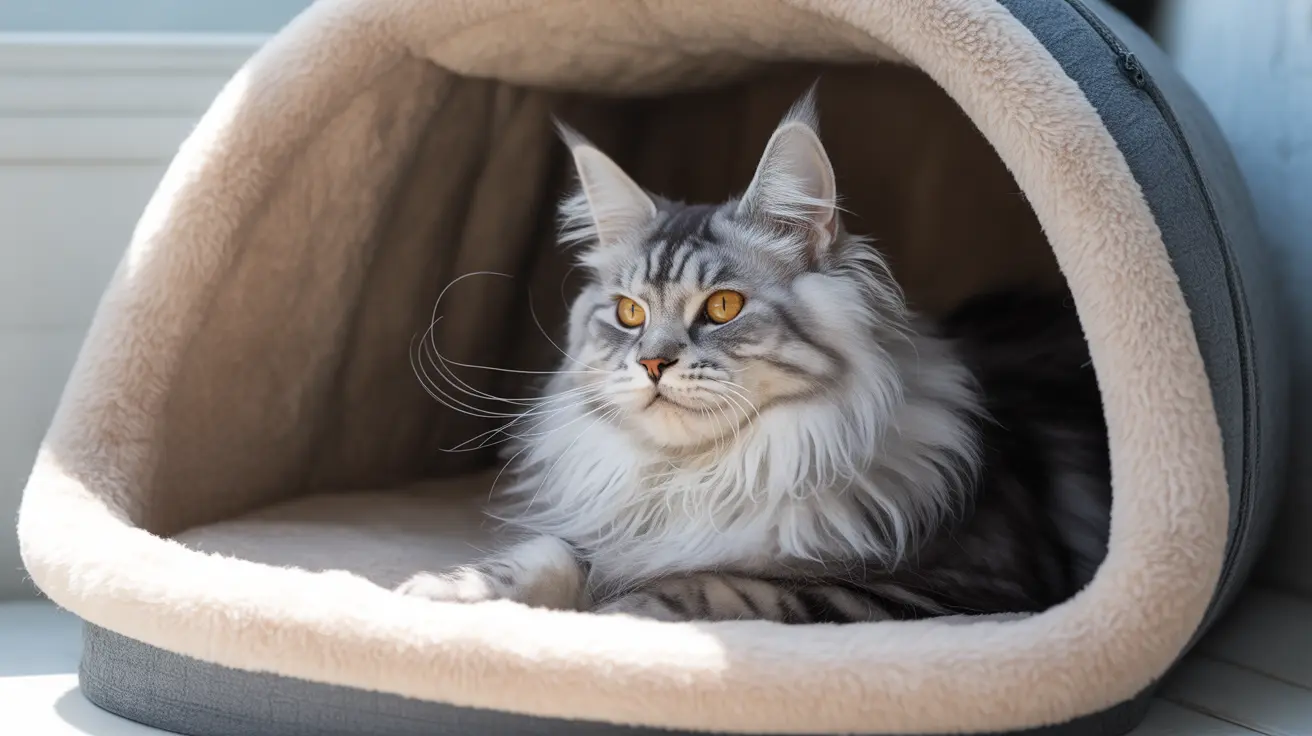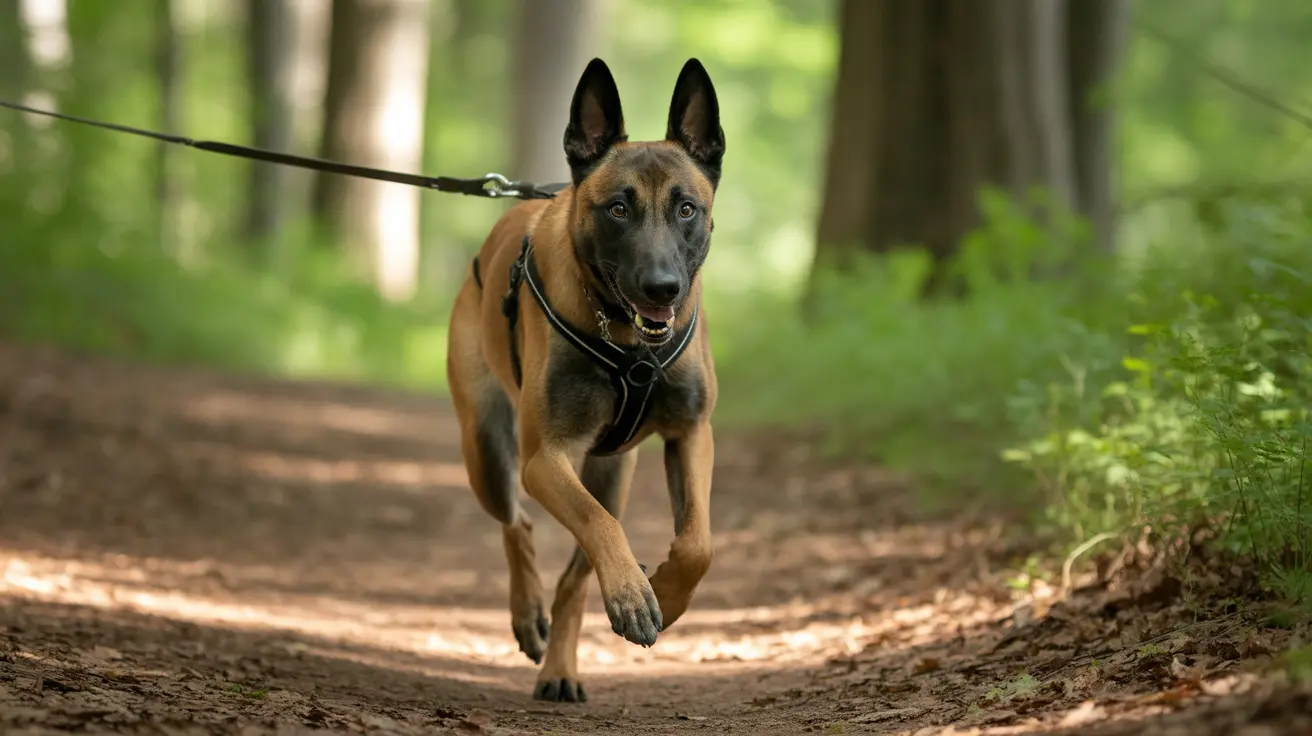The Complete Guide to Choosing the Safest Cat Carrier for Travel
Selecting the right cat carrier is one of the most important decisions you'll make when traveling with your feline companion. Whether you're planning a simple trip to the veterinarian or embarking on a cross-country journey, the safety and comfort of your cat depends entirely on having the appropriate transport container. A quality safe cat carrier for travel not only protects your pet during transit but also reduces stress for both you and your cat while ensuring compliance with safety regulations.
The market offers countless carrier options, from lightweight soft-sided bags to crash-tested hard carriers, each designed for different travel scenarios and cat temperaments. Understanding the unique features, benefits, and limitations of each type will help you make an informed decision that prioritizes your cat's safety and well-being. This comprehensive guide will walk you through everything you need to know about selecting, using, and maintaining the ideal carrier for your specific travel needs.
Why Proper Cat Transport Containers Are Essential
Using an appropriate cat carrier isn't just a matter of convenience—it's a critical safety requirement that protects both your pet and other travelers. Cats that are transported improperly can become projectiles during sudden stops or accidents, potentially causing serious injury to themselves and passengers. German regulations established by ADAC mandate that animals must be properly secured in vehicles, with violations resulting in fines up to €50 and potential penalties for novice drivers.
Beyond legal requirements, proper containment prevents cats from interfering with the driver's ability to operate the vehicle safely. A loose cat can hide under brake pedals, obstruct the driver's view, or cause dangerous distractions during critical moments. Additionally, stressed cats may attempt to escape when doors are opened, leading to potentially tragic situations in unfamiliar environments.
Hard-Sided Carriers: The Gold Standard for Safety
Hard-sided carriers represent the safest option for most travel situations, offering superior protection and durability compared to their soft-sided counterparts. Dr. Amber Carter, a board-certified feline veterinarian, strongly advocates for hard carriers with removable tops, particularly for nervous cats, as they provide better safety, usability, and are easier to clean when accidents occur.
Top-Rated Hard Carriers
The Sleepypod Mobile Pet Bed stands out among hard carriers with its removable zippered top and cozy interior design that helps reduce travel stress. For veterinary visits, the Doc & Phoebe's SPOT 3-in-1 Sleep & Go Cat Carrier offers a veterinarian-developed design featuring removable windows and a dedicated hiding space that allows cats to feel secure during examinations.
The Amazon Basics 2-Door Top Load and Midwest Homes carriers both feature removable tops and hard-sided durability, making them excellent choices for cats who become anxious during handling. The Van Ness Calm Carrier takes a unique approach by sliding open from the back, facilitating veterinary access while keeping the cat secure in the front portion of the carrier.
For maximum versatility, the Catit Cabrio Cat Carrier combines a split-top design with an integrated handle that offers seatbelt compatibility and includes interior feeding dishes for longer journeys. The Petmate Two Door Top Load Pet Kennel provides exceptional durability suitable for both veterinary visits and cargo airline transport, though it lacks crash test certification.
Soft-Sided Carriers: Lightweight Options with Limitations
While soft-sided carriers offer advantages in terms of weight and storage, they come with significant limitations that cat owners must carefully consider. These carriers may collapse under pressure, making it difficult to handle fearful or aggressive cats safely. However, certain soft-sided options have been engineered to address these concerns.
Airline-Approved Soft Carriers
The Sleepypod Air In-Cabin Pet Carrier represents the pinnacle of soft carrier design, featuring crash testing certification, a compressible design for under-seat storage, privacy shields, and full airline compatibility. The Sherpa Travel Original Deluxe offers airline approval with a guaranteed on-board program, though it lacks the crash testing credentials of the Sleepypod model.
For budget-conscious cat owners, the Frisco Collapsible Cat Carrier Bag provides an affordable solution for veterinary visits and casual use, though it's not suitable for air travel. The PETSFIT Cat Car Carrier offers impressive safety features including patented safety buckles, an adjustable clip-on harness, lockable zippers, and an anti-loss safety rope to prevent escapes during both car and air travel.
Expandable and Specialty Soft Carriers
The Petsfit Expandable Travel Carrier addresses the space limitations of traditional soft carriers by providing multiple expandable compartments that give cats room to stretch during longer journeys. Mr. Peanut's Airline Approved Soft-Sided Carrier focuses on lightweight design and breathability, making it particularly suitable for smaller cats.
The SportPet Designs Foldable Travel Cat Carrier bridges the gap between soft and hard carriers with its collapsible hard-shell construction and wide side entry. The Pet Magasin Hard Cover Collapsible Carrier includes both top and front entry points with excellent ventilation systems.
Specialized Carriers for Unique Travel Needs
Certain travel situations require specialized carrier designs that go beyond traditional hard or soft options. These carriers address specific challenges such as extended outdoor adventures, multi-cat transport, or cats with particular anxiety issues.
Backpack and Adventure Carriers
The Petsfit Pet Backpack Carrier caters to outdoor enthusiasts with padded straps and ample ventilation systems designed for hiking and extended outdoor activities. However, it's important to note that backpack carriers often lack sufficient space and privacy, which cats need to feel secure during transport.
The Pidan Backpack Cat Carrier offers a collapsible, lightweight design with built-in padding, though it may not be entirely scratch-resistant for cats with aggressive tendencies. The Lollimeow Pet Rolling Carrier provides maximum versatility by combining multiple carrying modes including backpack and wheeled options with privacy shades.
Large Cat and Multi-Pet Solutions
For larger cats, the SturdiBag XL provides rugged construction with enhanced escape prevention features. The Petseek Large Cat Carrier addresses anxiety issues with privacy flaps and multiple entrance options that help nervous cats feel more secure during transport.
The One for Pets Portable Pet Kennel serves as both a carrier and temporary housing solution for multiple cats, though it features an unstructured bottom and lacks safety certification for vehicle use.
What Makes Wire Cages and Emergency Options Inadequate
While wire cages might seem like a logical choice due to their ventilation and visibility, they're only appropriate for very short trips due to significant drawbacks. These carriers lack shelter from drafts and provide no privacy for anxious cats, potentially increasing stress levels during transport. The open design also offers minimal protection in case of accidents or sudden stops.
Cardboard boxes should only be used in true emergencies for the shortest possible distances. They lack proper ventilation systems, secure closure mechanisms, and durability needed for safe transport. Natural woven travel baskets, while offering some comfort to fearful cats, present challenges including ventilation issues, excessive weight, and hygiene complications that make them unsuitable for regular use.
Crash Safety and Vehicle Security Requirements
One of the most critical factors in carrier selection is crash safety certification and proper vehicle securement. The Sleepypod Air In-Cabin Pet Carrier stands out as one of the few carriers that have undergone rigorous crash testing to ensure your cat's safety during vehicle accidents.
The Tavo Pets Maeve Car Seat represents the gold standard for car travel, featuring a padded interior, easy car installation system, and stability legs that keep the carrier secure during transit. While it may be the heaviest and most expensive option, its safety features justify the investment for regular car travel.
Proper securing involves more than just placing the carrier on a seat. The carrier must be anchored using seatbelt systems or specialized car restraints to prevent it from becoming a projectile during sudden stops or collisions. Many modern carriers include seatbelt compatibility features or dedicated attachment points for this purpose.
Carrier Size and Comfort Requirements
Selecting the appropriate carrier size is crucial for your cat's comfort and safety during travel. According to expert recommendations, carriers must be spacious enough for cats to stand, turn around, and lie down comfortably. A carrier that's too small can cause stress, muscle cramps, and anxiety, while one that's too large may not provide the sense of security that cats need during transport.
The PETSFIT Cat Car Carrier illustrates proper sizing with its medium version suitable for pets up to 9 pounds and large version accommodating cats up to 20 pounds. The carrier measures 18 x 11 x 11 inches, providing adequate space while maintaining portability and airline compliance.
Preparing Your Cat for Carrier Travel
Familiarizing cats with their carrier at least a week in advance significantly reduces travel stress and makes the transport experience more pleasant for everyone involved. The carrier should ideally double as a cozy resting place filled with familiar items that provide comfort and security.
Start by leaving the carrier open in your cat's favorite room with comfortable bedding and perhaps a favorite toy inside. Feeding treats or meals near or inside the carrier helps create positive associations. Gradually close the carrier door for short periods while your cat is inside, always ensuring the experience remains positive.
Additional comfort measures include using absorbent liners to manage accidents and including personal belongings with familiar scents to calm the cat during the journey. The American Association of Feline Practitioners provides detailed handouts on carrier training techniques that veterinarians often recommend to reduce travel stress.
Maintenance and Hygiene Considerations
Regular cleaning and maintenance of cat carriers is essential for both hygiene and your cat's health. Hard-sided carriers with removable components are significantly easier to clean and sanitize compared to soft carriers with fabric components that may require special care.
The removable soft fleece beds found in carriers like the PETSFIT model provide comfort but may have limited washer compatibility, requiring hand washing or replacement over time. Hard carriers can typically be disassembled completely, allowing thorough cleaning with pet-safe disinfectants.
Proper maintenance also involves regular inspection of zippers, latches, hinges, and ventilation screens for wear or damage that could compromise safety. Replace carriers that show signs of structural weakness, as a failed carrier during transport can lead to dangerous escape situations.
Airline Travel and International Regulations
Air travel with cats requires specific carrier certifications and size restrictions that vary between airlines and international destinations. The Sleepypod Air In-Cabin Pet Carrier and Sherpa Travel Original Deluxe both offer airline approval, with the Sherpa including a guaranteed on-board program for additional peace of mind.
International travel may require additional documentation, health certificates, and specific carrier types depending on the destination country's regulations. Some countries mandate the use of IATA-approved carriers for all animal transport, while others have specific size, material, or ventilation requirements.
For cargo transport, kennels designed specifically for air travel offer enhanced sturdiness and roominess compared to standard carriers. These specialized containers are often equipped with food and water dishes and meet the stringent requirements for cargo hold transport, though they can be costly when purchased new.
Emergency Travel Kit Essentials
Every cat owner should maintain an emergency travel kit that complements their chosen carrier. Essential items include health documentation, vaccination records, a supply of your cat's regular food and water, cleaning supplies for accidents, and any medications your cat requires.
Additional comfort items might include familiar blankets, favorite toys, and calming aids such as pheromone sprays or natural calming supplements recommended by your veterinarian. A basic first aid kit designed for cats can also provide peace of mind during longer journeys.
Frequently Asked Questions
What size carrier do I need for my cat?
Your cat should be able to stand, turn around, and lie down comfortably inside the carrier. For most average-sized cats (8-12 pounds), a carrier measuring approximately 18 x 11 x 11 inches provides adequate space. Larger cats may require carriers designed for pets up to 20 pounds, while smaller cats can use more compact options for easier handling.
Are soft carriers safe for car travel?
Soft carriers can be safe for car travel if they feature proper safety certifications, secure attachment systems, and sturdy construction. The Sleepypod Air In-Cabin Pet Carrier is crash-tested and considered safe for vehicle use. However, many soft carriers lack the structural integrity needed for car travel safety and may collapse under pressure.
How long can a cat stay in a carrier during travel?
For most healthy adult cats, carrier travel should be limited to 4-6 hours without breaks. During longer journeys, provide opportunities for your cat to use a litter box, drink water, and stretch in a secure environment. Never leave cats in carriers for extended periods without proper ventilation, temperature control, and access to water.
Can I use a cardboard box as a cat carrier in emergencies?
Cardboard boxes should only be used for very short distances in true emergencies. They lack proper ventilation, secure closures, and durability needed for safe transport. Even in emergency situations, try to secure proper ventilation holes and ensure the box is structurally sound before use.
What's the difference between carriers and kennels?
Carriers are designed for transport and typically feature handles, shoulder straps, or wheels for portability. Kennels are larger, sturdier containers often used for air cargo transport or temporary housing. Kennels frequently include food and water dishes and meet more stringent construction standards but are heavier and less portable than standard carriers.
How do I get my cat used to the carrier?
Start familiarization at least a week before travel by leaving the carrier open in your cat's living space with comfortable bedding inside. Feed treats or meals near the carrier to create positive associations. Gradually increase the time your cat spends inside with the door closed, always keeping experiences positive and stress-free.
Which carrier features are most important for anxious cats?
Anxious cats benefit from carriers with removable tops (allowing them to stay inside during vet exams), privacy features or covers, secure hiding spaces, and familiar scents from home. Hard carriers generally provide more security than soft ones, and features like the privacy flaps found in the Petseek Large Cat Carrier can significantly reduce anxiety during transport.
Conclusion
Choosing the right safe cat carrier for travel requires careful consideration of your specific needs, your cat's temperament, and the type of travel you'll be undertaking. Hard-sided carriers with removable tops offer the best combination of safety, ease of use, and cleaning convenience for most situations, while specialized soft carriers can provide excellent solutions for air travel and specific use cases when properly selected and used.
Remember that the most expensive or popular carrier isn't necessarily the best choice for your cat. Focus on safety certifications, appropriate sizing, and features that address your cat's specific needs and anxieties. Proper preparation, including carrier familiarization and emergency kit preparation, will ensure that both you and your feline companion can travel safely and comfortably, making every journey a positive experience.






